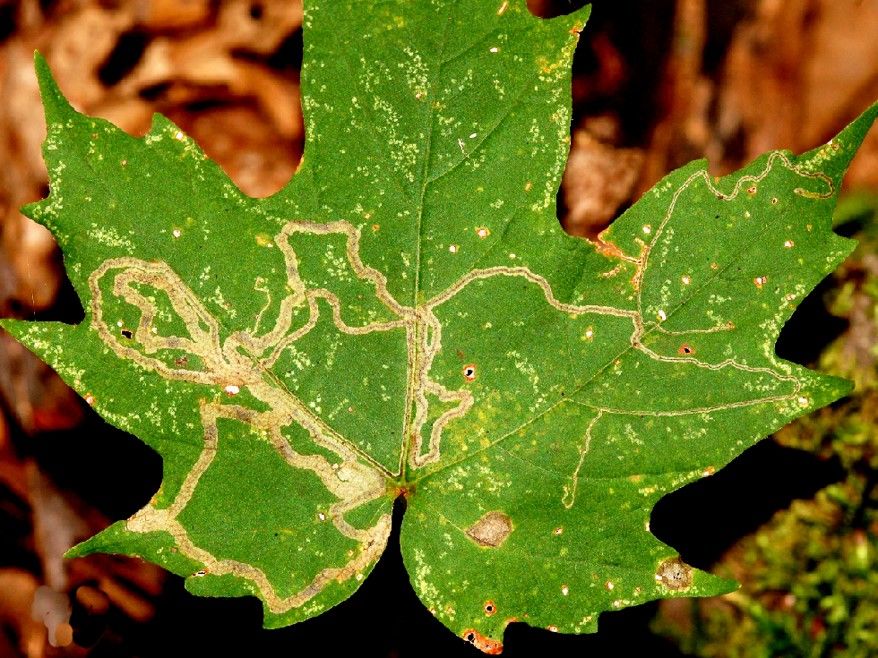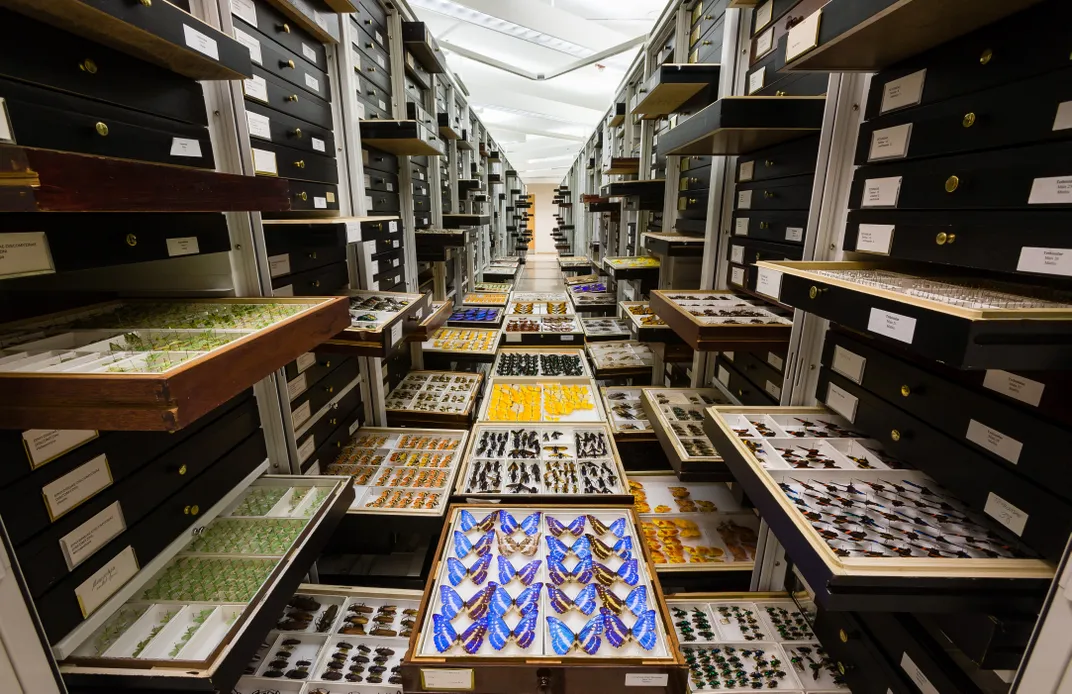NATIONAL MUSEUM OF NATURAL HISTORY
Who’s the Smallest of Them All? Mini Moth Gets a Big Title
A group of curious researchers has finally awarded one species the coveted title of world’s smallest moth
/https://tf-cmsv2-smithsonianmag-media.s3.amazonaws.com/blogging/featured/Tiny_black_and_gold_moth_on_a_green_leaf.jpg)
For more than a decade, an enormous group of itty-bitty insects has stirred up playful debate among those who study them. The question nobody could answer: which moth is the smallest of them all? Now, after years of meticulously measuring 2,800 specimens from over 650 species of micro-moths, a group of curious researchers has finally awarded one species the coveted title.
“Everybody always talks about the largest butterfly or the largest moth,” said Alma Solis, an entomologist at the USDA and curator of snout moths at the Smithsonian’s National Museum of Natural History. “But nobody had ever asked ‘which is the smallest?’”
In a new study published in Zootaxa, Solis and an international team of lepidopterists — or people who study butterflies and moths — gave the “tiniest moth on Earth” award to the pygmy sorrel moth (Johanssoniella acetosae), a relatively rare species found throughout Europe. Though small in stature, micro-moth populations can have big impacts on agriculture and the myriad animals that rely on them for food.
Measuring up
The pygmy sorrel moth belongs to a group of micro-moths called leaf miners. Named for their eating habits as larvae, leaf miner caterpillars tunnel between the top and bottom layers of leaves, “mining” them and slurping down the green goodness within. As the larvae eat their host plants from the inside, they create squiggly brown tunnels filled with poop, or frass, scrawled across the leaves. Researchers are often able to identify pygmy sorrel moths by their larvae's distinctive, spiral mining pattern.
Figuring out where these minute winged beasts live is one thing but measuring them is a feat of its own. “They are so tiny, they're measured in millimeters,” Solis said. Most micro-moths are hardly identifiable without a microscope and the fragility of their wings makes them difficult to handle without destroying their delicate, fuzzy bodies.
When researchers collect leaf miner moths in the field, they have two options: lure the moths during the night with bright lights or collect leaves containing the caterpillars and wait for adult moths to emerge from their cocoons.
Once captured, a moth is frozen and pinned to a foam block so researchers can examine its features and measure its wings. By measuring both freshly collected and previously preserved specimens from across the globe, Solis’ colleagues determined that pygmy sorrel moths are smaller than previously thought. Their wingspans can be as short as 2.65 mm — about the width of a strand of spaghetti.

Pure curiosity
The idea to find the smallest of the small began with a discussion online between the study’s lead author, Jonas Stonis from the State Research Institute’s Nature Research Centre in Lithuania, and some fellow lepidopterists. Stonis was tickled by the idea that no one had a definitive answer to such a simple inquiry, so he set out to measure as many micro-moth specimens as needed to lay the question to rest. Of the nearly 3,000 individual moths his team sized, most of them came from museums in Denmark, Russia and the United Kingdom as well as the Smithsonian’s National Museum of Natural History.
“People don't usually write these kinds of research papers, but it was one that was driven by that human curiosity for ‘which are the biggest, which are the smallest, which is the fastest and which is the slowest,’” said Solis. “This work came from that human need to answer these types of questions.”
Though the research question was straightforward, micro-moths — like most animals — play complex roles in their ecosystems. Hovering near the bottom of the terrestrial food chain, they provide nutrition to countless organisms like lizards, spiders, other insects and birds. Solis said these little lepidopterans could undergo significant population shifts as a result of changing climates, with unknown consequences for the plants and animals they interact with.
“In micro-moths, you often have more than one generation per year,” she explained. “As it starts to get warmer, we might expect to see even more generations each year, and we could see more moths go into pest status.”
Moths and other insects can earn pest status if they critically damage enough of the plants they like to munch on. In the past, leaf miner caterpillars have decimated citrus groves in Florida, tomato crops in Africa, nut orchards in Italy and oaks around the world. The larvae of leaf miners, protected from pesticides by the thin leaf walls they grow up between, are especially difficult for farmers to eradicate.

The clues within collections
With new species being described all the time, there is still a lot to be learned about micro-moths. How the moths are related and where exactly they are found is a primary research goal, said Solis. “What are they doing? What are they feeding on? Once you build a tree of relationships, then you can look for patterns.”
Patterns like where the smallest species live and what they eat have largely been discerned with the help of museum collections. Solis said this new study would not have been possible without the past contributions of researchers like Don Davis, now a retired curator of lepidoptera, who added nearly one million micro-moth specimens to the Smithsonian’s collection.
“We have one of the largest micro-moth collections in the world," Solis said. “It's really important for researchers all over the world who need to borrow specimens to study.”
It was certainly convenient for the researchers to have thousands of preserved specimens at their fingertips. Solis and her colleagues were especially grateful they had access to moths whose natural habitats have been destroyed since they were collected, as well as species that can only be found in countries where collection permits are nearly impossible to obtain.
In the face of continued habitat degradation and stricter conservation policies, Solis said: “the holdings of museum collections have become even more important to study the diversity of insects and other animals.”
Related Stories:
Say Hello to the Scientist Caring for Smithsonian’s 35 Million Entomology Specimens
Why Hawkmoths are the Underdogs of the Pollinator World
How Tiny Wasps Became Agricultural Defenders
Notorius Asian Giant Hornet Finds Home in Smithsonian
Get to Know the Scientist in Charge of Smithsonian’s 1.9 Million Mosquitoes

